Tuk Tuk Tours
Explore Bangkok by the iconic tuk tuk
All the best places to visit in Northern Thailand
The area that forms much of present day Northern Thailand was once a separate kingdom known as Lanna, a name which translates as ‘Land of a Million Rice Fields’. The region is proudly part of modern-day Thailand, but the old traditions of Lanna live on in the local language, the food and the culture of Northern Thailand.
In this guide to Northern Thailand we introduce the region and where to go.
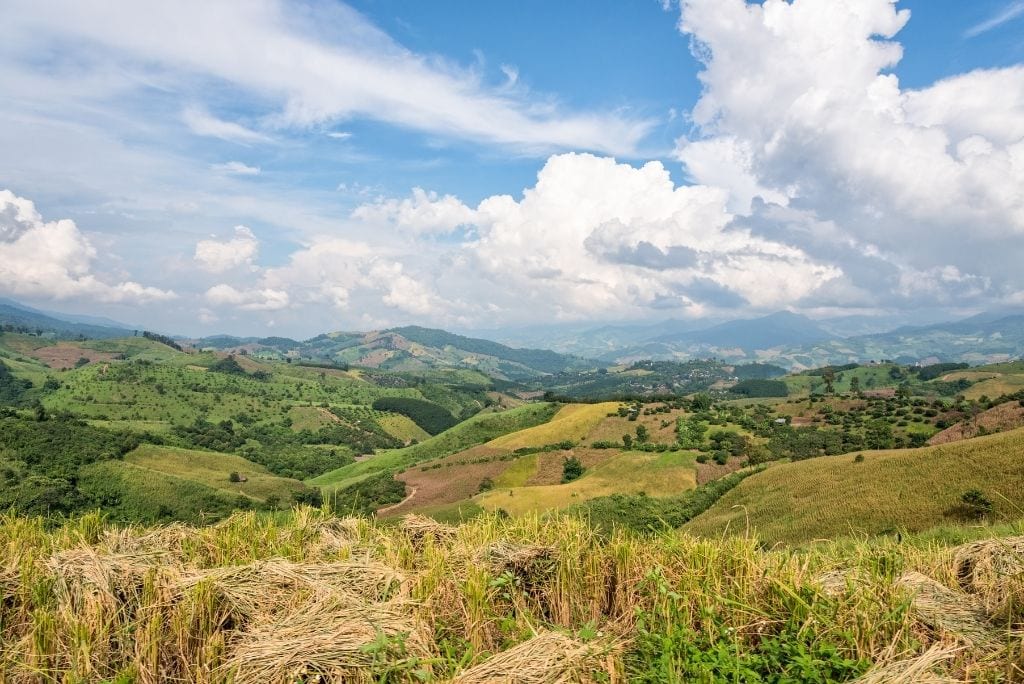
Northern Thailand is one of the most ethnically diverse regions of the country with hill-tribe communities including Karen, Akha and Lisu established here in addition to the Tai Yai (Shan) who originated from Burma (Myanmar). It all helps to make the North one of the most culturally rewarding destinations to visit in Thailand. And with mountains, waterfalls and verdant landscapes, it’s also one of the best regions in Thailand to explore the natural beauty of the country.

Chiang Mai is regarded as Thailand’s second city. While it can be busy, and locals do increasingly complain about traffic, getting around the city is still a breeze compared to the Bangkok roads. Many first-time visitors to Thailand only devote three or four days in Chiang Mai as part of a classic itinerary that takes in a night or two in Bangkok and a week on a Thai island in the south. There is absolutely nothing wrong with that approach, but visitors who do only stay a few days in Chiang Mai often regret not allocating more time to enjoy more of what the city and province has to offer.
The historic Old Town area of Chiang Mai is a charming base to explore the city. Encompassed by a moat and the renovated remains of the city walls, the Old Town can comfortably be explored by bicycle or on foot. You’re never too far from a coffee shop in Chiang Mai and they are an ideal place to relax and plan the next part of your day. And that plan should definitely feature delicious Northern Thai food and Chiang Mai’s array of street markets.
Head out of town for a day trip to the magnificent mountain temple of Wat Phra That Doi Suthep or travel further afield to the highest point in Thailand, Doi Inthanon. You could spend weeks in Chiang Mai without ever getting bored and the city is also an ideal springboard to explore lesser-visited neighbouring provinces like Lampang, Lamphun and Mae Hong Son.
For more information check out our Guide to Chiang Mai or our article on things to do in Chiang Mai.
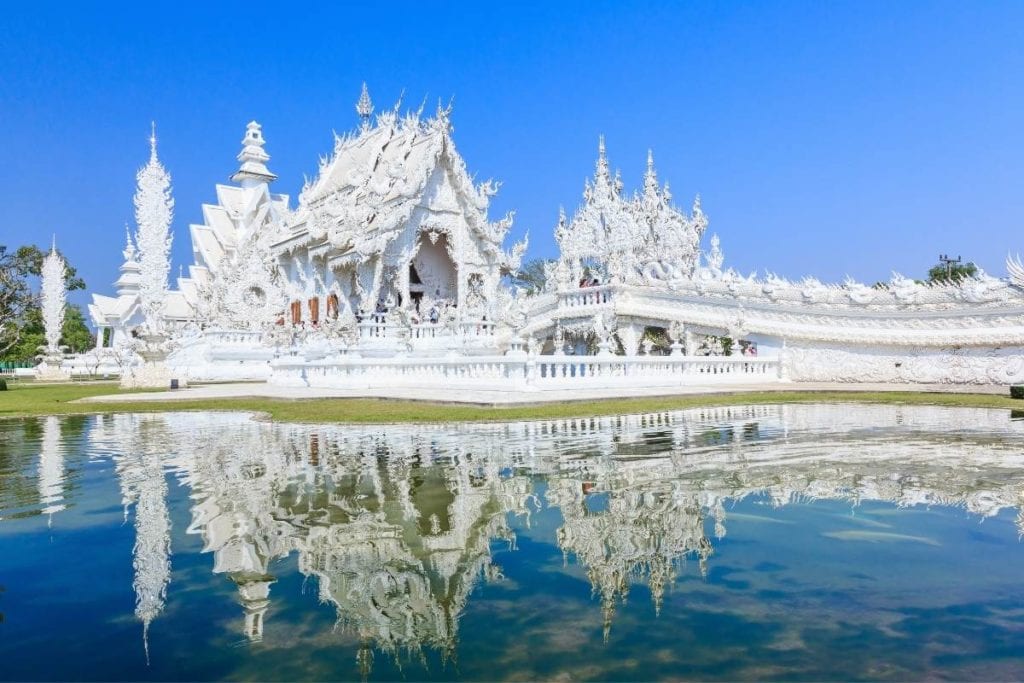
Although Chiang Rai city is often described as a smaller version of Chiang Mai, the comparison isn’t completely fair. Chiang Rai also has its own rich history and must-see locations.
Chiang Rai province is located right at the very top of Thailand, bordering both Laos and Myanmar. The infamous Golden Triangle overlooks the Mekong River where the three countries meet. This area was once notorious for the opium trade, but is now well and truly on the tourist trail. Most tourists travel on a day tour to the Golden Triangle, but the nearby Chiang Saen area is actually one which is well worth spending more time at.
Back in Chiang Rai city, the dazzling White Temple (Wat Rong Khun) gets plenty of deserved attention. The work of local artist, Chalermchai Khositpipat, the construction of the temple in the artist’s home village of Baan Rong Khun has been a labour of love. Another lavish temple, the Blue Temple (Wat Rong Seua Ten) is located closer to the city centre and has been designed by a student of Chalermchai. And more eclectic still is the quirky Baan Dam (Black House), a thought-provoking museum and gallery. If these museums and temples are too modern for your liking, Chiang Rai city is dotted with ancient temples including Wat Phra Kaew which once housed the famous statue of the Emerald Buddha that now resides at the temple’s namesake in Bangkok.
Away from the temples, Chiang Rai has the usual mix of night markets, daytime fresh markets and cooking classes to keep visitors entertained. The city and its surrounds also remain a popular centre for hiking and trekking. In particular, on the outskirts of the province, Phu Chee Fah and its surrounding mountaintops make for a worthwhile visit for those looking to take in some undeniably impressive vistas. And the gorgeous Mae Fah Luang Gardens at Doi Tung are well worth a visit too.
For more ideas check out our article 10 Things To Do In Chiang Rai
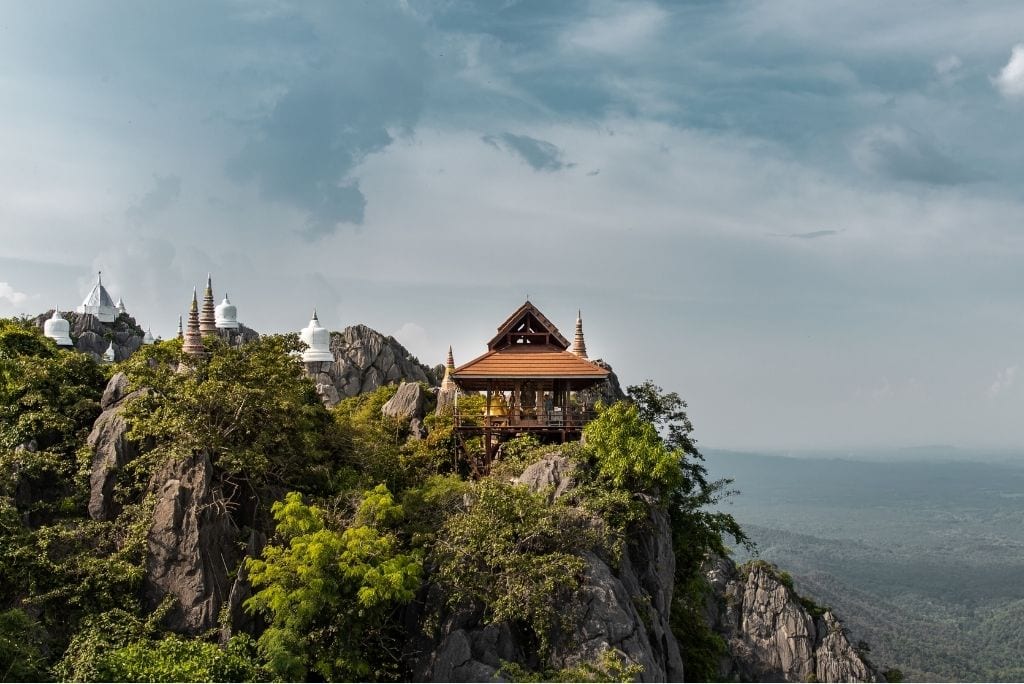
Lampang is another Northern Thai province blessed with mountain scenery and a charming provincial capital. Lampang rose to prominence on the back of the lucrative teak trade that saw Siamese and foreign merchants flock to the area in the late 1800s.
Logging experts from neighbouring Burma worked in Lampang and their legacy can still be seen today with the Shan-style temples. The logging trade has long since finished here, but elegant teak mansions dotted around the city are striking reminders of that bygone era. History buffs should check out Lampang National Museum to discover more about the city’s teak trading heyday.
One of the symbols of Lampang, the horse-drawn carriage also has connections with the teak trade. The horse and carts were introduced in 1916 when the northern train route was extended to Lampang. They proved to be a practical solution for hauling goods to and from the trains and they were subsequently used as an everyday form of transport. Although the horse and carts are mainly used for tourism today, they remain an endearing link to Lampang’s past.
A promenade adjacent to the Mae Wang River offers pleasant views of the city and one of Lampang’s most famous landmarks, the white-coloured Ratchadaphisek Bridge.
Around 30 km outside Lampang city brings you to the state-run Thai Elephant Conservation Centre (TECC). Adjacent to TECC is the privately funded Hospital of the Friends of the Asian Elephant Foundation. This is the home of Mosha, an elephant who has been fitted with a prosthetic leg and whose story inspired the Elephant Parade project to raise funds and awareness for Asian elephants.
A short drive out of town, the temple of Wat Phra That Lampang Luang is highly revered by local people and a superb example of Lanna architecture. More difficult to reach, but well worth the effort, is Wat Phrabat Pu Phadaeng and the ‘floating pagodas’ that sit high up on a cliff.
Lampang is only around two hours drive from Chiang Mai, but for a more memorable way to arrive, take the local train from Chiang Mai and enjoy one of the most scenic railway journeys in Thailand.
For more information check out our Lampang Guide – All You Need To Know
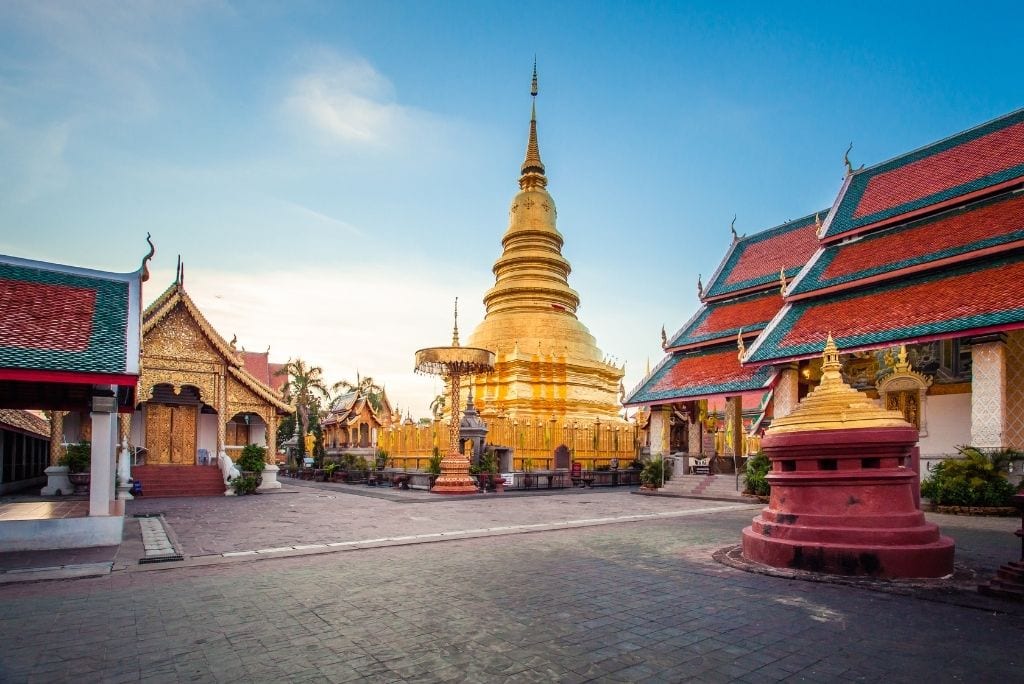
One stop before Chiang Mai on the railway line north from Bangkok, minuscule Lamphun is about as far off the tourist trail as you’ll get in Northern Thailand. Although it’s small (the smallest province in the North), Lamphun is big on history with Mon-style temples dating to around the seventh century and countless monuments to Queen Chamathewi. The warrior queen was an important figure from this period who founded the Hariphunchai Kingdom in what is now Lamphun. The informative Hariphunchai National Museum is a good starting point to learn more about the history of Lamphun.
Most of the main sights in Lamphun’s compact city centre can be covered on foot or by bicycle. The highlight is Wat Phra That Hariphunchai. One of the most important temples in the whole of Thailand, the golden chedi here is said to contain relics of the Buddha. The temple is a place for pilgrimage for Thai Buddhists especially those born in the Year of the Rooster for whom a visit here is considered extra auspicious.
You’ll find all the usual Northern Thai food favourites in Lamphun and the province is also famous for its lamyai (longan) orchards. Away from the city, Doi Khun Tan National Park is one of Thailand’s oldest national parks and home to a number of enjoyable walking trails.
For more ideas check out our Lamphun Travel Guide: All You Need To Know
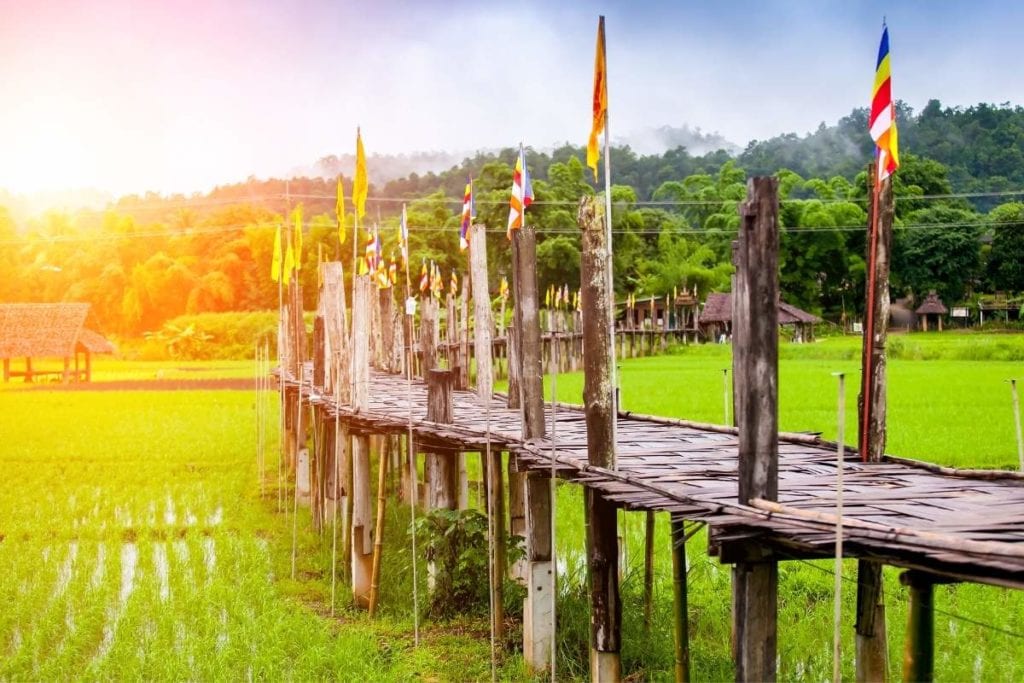
When you arrive in Mae Hong Son it immediately feels different to the rest of Thailand. Nestled against the Burmese border, the remote mountainous province was notoriously difficult to reach before roads reached the region. This isolation enabled Mae Hong Son to establish its own distinct identity which is closely associated with the Tai Yai (Shan) community. The Tai Yai have lived in this region for centuries and form one of Thailand’s largest ethnic minority groups. Their culture and elegant temples help make Mae Hong Son one of Thailand’s most interesting provinces to travel to.
The outstanding natural beauty of Mae Hong Son is another reason to visit. In the delightful provincial capital, make the trip to the hilltop temple of Wat Phra That Doi Kong Mu for glorious views of the valley below and the mountains beyond.
The cultural diversity of Mae Hong Son and the fact that it takes more effort to travel to, make it the ideal location to enjoy another side of Thailand. Look out for two particularly colourful local festivals, the Poi Sang Long ordination ceremony in April and the Chong Para Festival in October.
Probably the best-known location in Mae Hong Son province is Pai (read more about Pai further below). The small town has long been established on the backpacker trail, but only really rose to prominence for domestic tourists during the 2000s when it featured in a string of popular Thai movies including Pai in Love. And Chinese tourists started to travel in numbers to Chiang Mai and Pai on the back of the 2012 movie, Lost in Thailand.
For more ideas check out our Mae Hong Son Guide: All You Need To Know
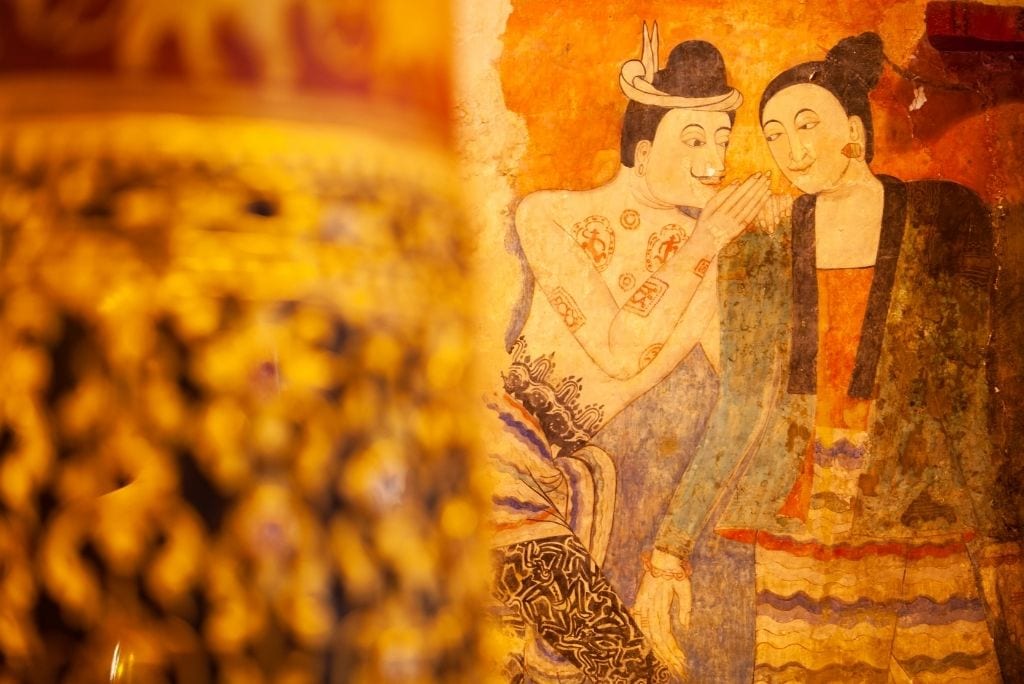
For those who know Thailand well, Nan is regarded as one of the most beautiful provinces in the country. Despite its rugged mountain scenery, rich culture, and charming provincial capital, Nan continues to fly under the tourist radar. But for anybody who wants to see the ‘real Thailand’ then Nan is the perfect choice.
Local building regulations in the provincial capital mean that there are no high-rise buildings and Nan city is a delightful place to explore either on foot or by bicycle. There are a number of historic temples in Nan, but the pick of the bunch is Wat Phumin with its famous ‘Whispering’ mural. The painting has become a symbol of Nan and can be found on souvenirs all around the city.
Make time for the Nan National Museum and even if history isn’t your thing, this delightful old building (a former palace and home to the rulers of Nan) is well worth a visit. With a picturesque garden setting and frangipani-lined walkways, it’s a lovely location to learn more about Nan. Just outside town, make time too for Wat Phra That Khao Noi and the magnificent standing Buddha image that overlooks the valley below.
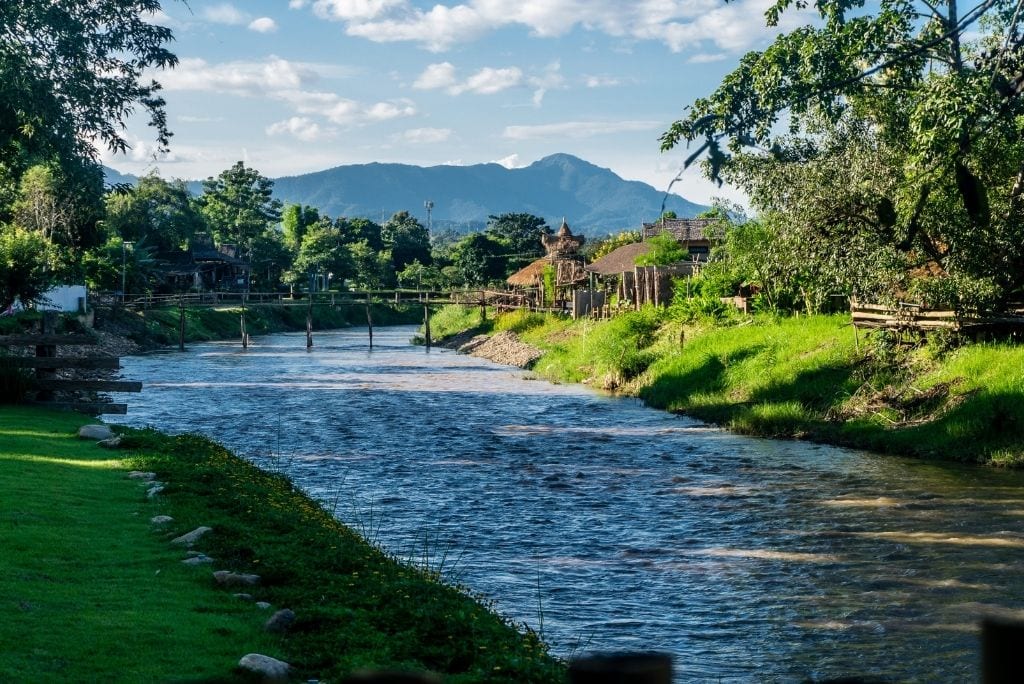
Pai is perhaps more famous for the long, twisting mountain road that connects it to Chiang Mai than it is for anything else. There are said to be 762 bends on the road so if you suffer from car sickness, you have been warned. Pai has long been popular with overseas backpackers and budget travellers, but has increasingly been attracting a more diverse array of visitors. Although it hasn’t completely shaken off the hippie image, Pai has seen a number of boutique hotels spring up together with more venues that support health-focused activities like meditation, yoga, and various kinds of detoxes.
Despite its rise in popularity, Pai remains a place to hang out and relax with the surrounding countryside home to waterfalls, hot springs and lots of picturesque scenery. Pai (and Mae Hong Son province in general) gets distinctly chilly at night and in the early morning during the cool season months (November-February) so do keep that in mind when deciding what to pack for your travels.
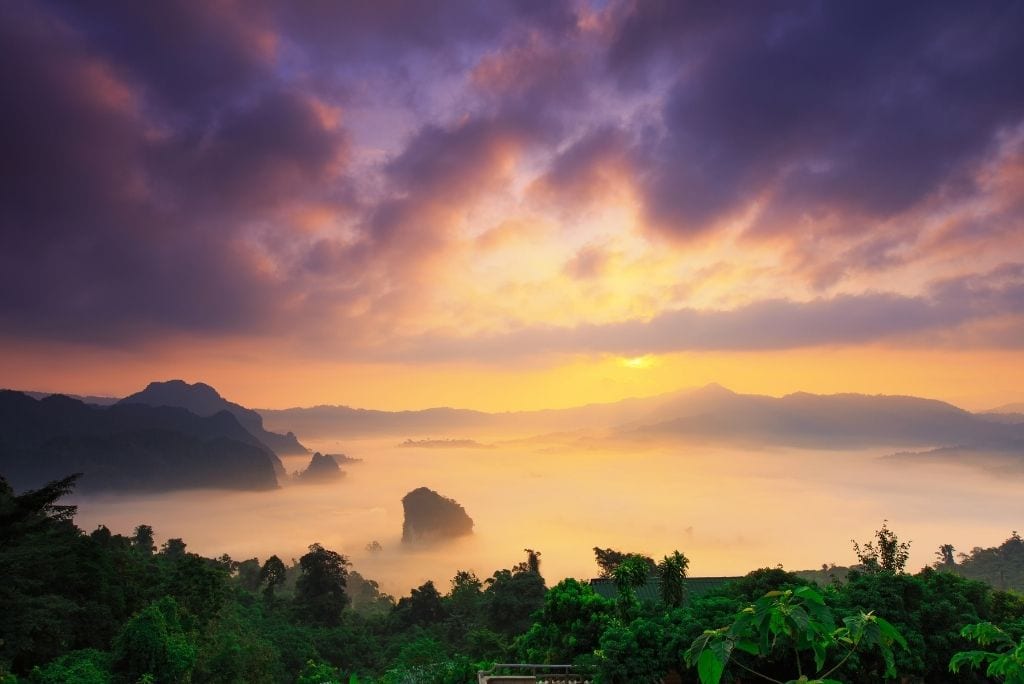
Phayao doesn’t see much in the way of foreign visitors, but it’s a pleasant spot to while away some time and, as provinces go, it packs in much of what draws tourists to Northern Thailand in the first place. As long as you don’t come expecting a fully developed traveller scene, you’ll find a laid-back city with a photogenic lake and plenty of national park action close at hand.
If you’re truly looking to escape civilization for a while, Phu Lang Ka is among our favourite places to do it. This is truly an isolated mountaintop village. It’s really a bit of a pain to get to, but that’s half of the attraction. And when you do arrive, the basic accommodation puts you in a perfect spot to soak up some of the cool season’s beautiful fog-filled vistas over the ocean-like limestone karst landscape below (we wouldn’t recommend it so much the rest of the year, when it gets wet and much less pleasant).
For more ideas check out our Phayao Guide – All You Need To Know
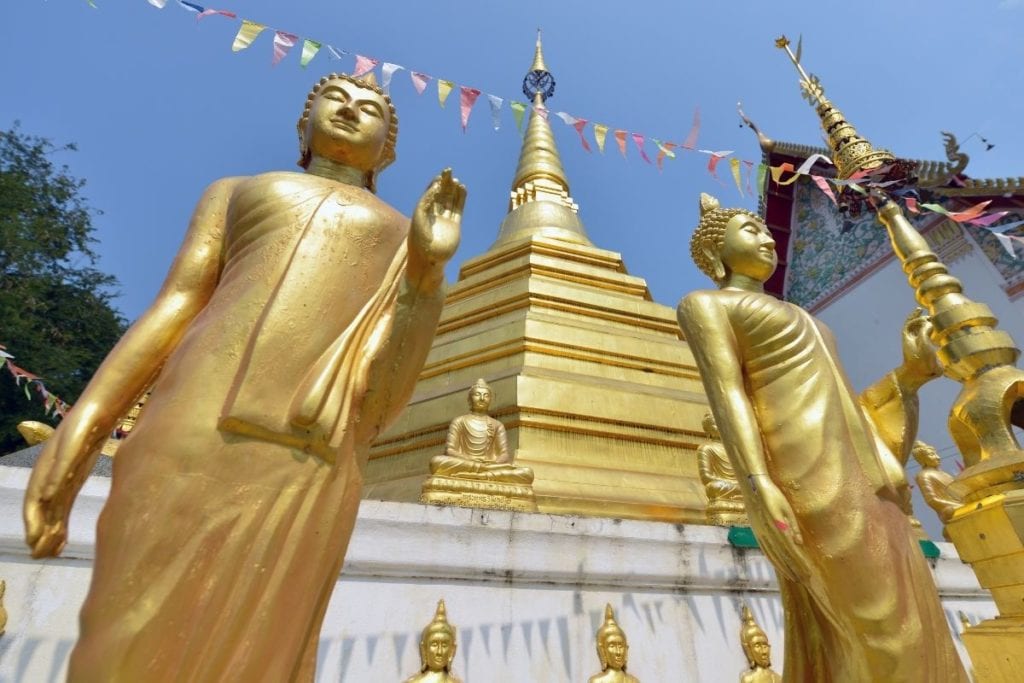
As with Phayao, not many overseas tourists venture to Phrae. Those that do are often pleasantly surprised by the city and its amiable Old Town district. Visit at the weekend to enjoy the small, but enjoyable Saturday Walking Street Market on Kamlue Road.
Phrae was once famous for its teak forests and a number of elegant wooden buildings can be seen around town including Wongburi House and Ban Pratup Chai. The Seri Thai Museum is another lovely old wooden building worth making time to see. The museum is dedicated to the Free Thai Movement, the underground resistance movement who assisted the Allies during World War II.
Phrae has a long tradition of textile weaving and is perhaps most famous among Thai people for being the home of the indigo collarless shirts known as ‘mo hom’ that are worn by workers and farmers across the country.
The most revered temple in Phrae, Wat Phra That Choe Hae, can be found around 10 km away from the city centre. The temple is said to contain relics of the Buddha and is the location for a splendid annual festival (held in March/April) where thousands of locals gather to pay their respects.
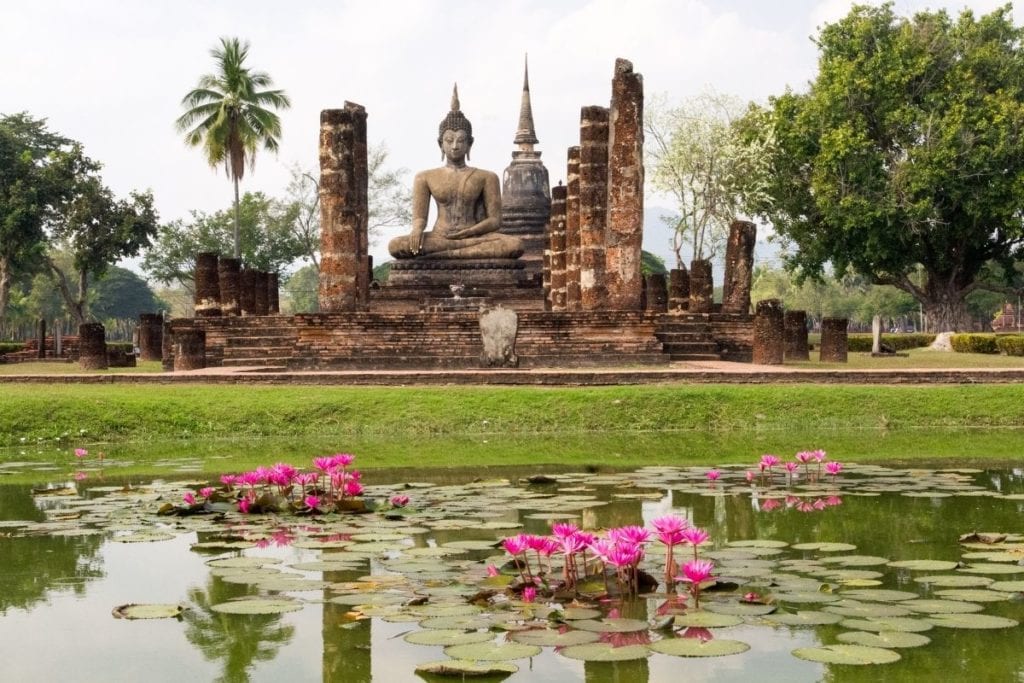
Situated approximately halfway between Bangkok and Chiang Mai, the ancient city of Sukhothai was the former capital of Thailand (then Siam). With a history dating back around 800 years, the impressive collection of ruins at Sukhothai Historical Park were awarded Unesco World Heritage status in 1991.
What makes Sukhothai so special isn’t just the atmospheric old temple ruins, but the serene natural setting. Sukhothai Historical Park park is divided into five zones and covers an expansive area which is a delight to explore by bicycle. Allow at least two full days to do the area justice. And if you have more time to spare, the even quieter ruins at Si Satchanalai are also worth a visit.
According to at least one Thai legend, Sukhothai is said to be where Loy Krathong originated. Local authorities aren’t shy about promoting the connection and the Loy Krathong Festival in Sukhothai is a big deal and certainly one of the best locations in Thailand to experience this beautiful event.
At Expique our mission is to help people discover the real Bangkok (and beyond) and the local cultures. Our current focus is to provide the best content available to plan a trip and discover Thailand.
Prior to COVID-19 our focus was on offering a range of experiences in Bangkok including our award winning Bangkok Night Lights Tuk Tuk Tour.
For now however, our focus is on creating amazing content instead.
Subscribe to our newsletter to receive monthly news and tips about exploring Bangkok.